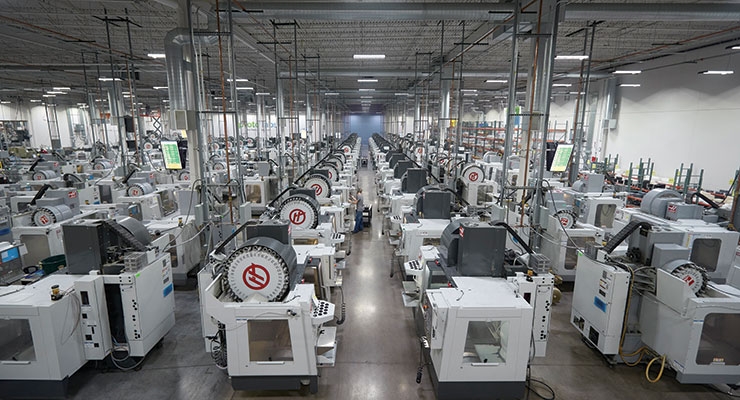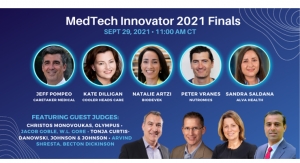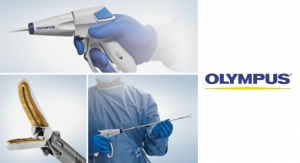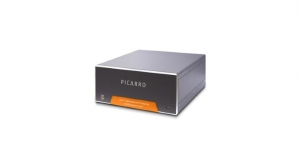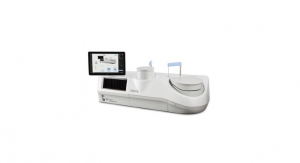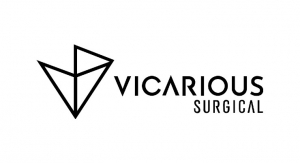Mark Crawford, Contributing Writer07.26.17
Prototyping is an essential part of medical device development and manufacturing. Not only is it critical for refining the design of a product and testing safety and performance, prototyping is a must for startups so they can show investors how the product looks and functions. Without prototypes, it would be nearly impossible to secure funding for production. Nimble startups use rapid prototyping and low-volume manufacturing to compete with established companies and gain market share.
Prototypes also play a critical role in getting quality feedback from end users. For example, developers use prototypes to solicit early design feedback from surgeons. For small or startup companies that don’t have ready access to doctors or surgeons, having a highly representative prototype can lead to better design optimization within accelerated development windows.
For all these reasons, prototyping is perhaps the most crucial part of medical device development. Prototyping is about speed—fast turnaround time on early-stage products. The goal is to find the flaws and imperfections, freeze the design, and then release it into full production.
“Right now, prototyping activity is at a very high level in the medical device industry—almost hectic, in fact,” said Herb Bellucci, president of Pulse Systems, a Concord, Calif.-based provider of precision fabrication services to the medical device industry. “Product developers are quite intent on finding suppliers that can get their product ideas to fruition as quickly as possible.”
“It’s all about time and money,” added Chueyee Moua, R&D engineer at Catheter & Medical Design Inc., a Roseville, Minn.-based provider of high-quality custom medical catheter products. “The first company to come out with the product at the right price wins it all. Therefore, prototyping is the most important step after all is done with the pricing and negotiating; it gets the part into the engineers’ hands during the design stage to identify any needed changes and make quick decisions.”
Another reason prototyping is in high demand is that prototyping technologies such as additive manufacturing (AM) are reducing the number of iterations needed, saving time and money. The steady release of new AM materials also expand design possibilities. In addition, AM equipment is coming down in price, making it more affordable to a wider array of contract manufacturers. As the cost per part drops, the new challenge becomes meeting regulatory requirements and developing validation processes for parts that are manufactured with 3D printing.
Popular prototyping technologies—injection molding, binder jetting, fused deposition modeling, stereolithography, selective laser sintering, PolyJet, digital light processing, and direct metal laser sintering—all increasingly rely on digital tools and technologies to drive efficiency and creativity in product design and low-volume manufacturing.
Although 3D printing is often cited as the main driver for the integration of digital tools, a range of progressive software applications is also transforming many manufacturing technologies, design tasks, and supply chain operations. For example, powerful software can create digital simulations to verify designs and artificial intelligence is being applied to engineering tasks.
“This reduces product and device development time and cost, increases learning iterations, and accelerates design and manufacturing speeds at low volumes,” said Jeff Schipper, director of special operations for Proto Labs, a Maple Plain, Minn.-based digital manufacturer of custom prototypes and low-volume production parts. “It also provides companies—large or small—with instant access to tools and processes that were once reserved for elite firms in the past.”
Medical device manufacturers that outsource their prototyping needs expect their supply chains to be ready with the latest technologies and materials. This includes “everything from stronger, device-capable, medical-grade resins to manufacturing strategies that emphasize lower cost and higher reliability, including the actual electro-mechanical design,” said Cory Forbes, director of engineering, technology, and program management for Nypro Inc., a Jabil company in San Jose, Calif., that provides medical device development and support. “Technologies are advancing faster than ever before and the medical industry is taking advantage of these trends by outsourcing to suppliers able to serve a diverse range of market verticals.”
What OEMs Want
OEMs are looking for the shortest lead time with the best pricing. They want to have the parts in their hands to assess and evaluate the initial trial as quickly as possible. This makes it easier to explore ways to refine designs and still get the best product to market quickly.
In addition to faster turnaround times, OEMs seek more accurate and reliable products at a lower cost. Advanced technologies make this easier to achieve. “This includes producing first-time components with base materials performing as close as possible to the final resin performance—meaning it may be used in first-time electromechanical assemblies,” said Forbes. “Minimizing expensive resins of printed circuit boards and housings utilizing design for manufacturability (DFM) guidelines also reduces costs.”
Also, to improve accuracy and reliability, AM technology suppliers are working hard to develop more medical-grade materials and stronger 3D print materials for AM equipment. For injection-molded prototypes, OEMs are pushing for materials that perform as close as possible to the production material performance. This allows for more accurate engineering test data and testing for friction performance, drop test, and components aging.
With more complex designs, new materials, and increased regulatory scrutiny, OEMs expect improved discipline and rigor from their contract manufacturers throughout the design process. Therefore, effective project management is even more important than before, with an emphasis on agility and speed during the prototyping stage. Customer inspection criteria for prototypes often include higher levels validation planning, such as failure mode and effects analysis, installation qualification, operation qualification, installation/operational/performance qualifications (IQ/OQ/PQ), and CPK inspection data.
“Marketing leaders push for quicker cycle times, engineering leaders want cutting-edge technology, and supply chain leaders seek lower-cost initiatives,” said Forbes. “However, we often find singular visions from OEM executive teams that cut across all of these disciplines via project management. As the healthcare industry matures, budgets—specifically for R&D—are being compressed, which translates into the need for fewer iterations on a particular design to get it right.”
Technical Trends
With all the excitement about the possibilities of additive manufacturing, there are still plenty of designs that benefit best from “traditional” machining processes. There are some products that cannot (or should not) be made with AM or 3D printing. For example, a significant number of mechanical devices require spring functions, which can be difficult to achieve with 3D-printed parts. Another challenge is the production of prototype parts from flexible polymers like thermoplastic elastomers (TPE) or silicones that offer the required shore hardness. Some 3D printers allow the mix of resins to achieve a specific durometer. However, due to the layered printing process, these components are often permeable and structurally weak.
“Although the emergence and potential dominance of 3D printing technologies is very relevant and widely talked about, there is continued progress in ‘conventional’ machining technologies,” said Bellucci. “This is especially true for the development of very small cutting tools, and related tool materials such as coatings.”
CNC Machining and Assembly
On the mechanical side, the availability of 5-axis computer numerical control (CNC) machining allows for quicker turnaround of mold tools for prototype volumes. This faster turnaround is further enabled by online quotes and ordering tools. Increasingly sophisticated laser technologies can produce very small parts with complex features as small as a few microns from a wide range of materials, including polymers and metals. “Hybrid” machine tools, which combine the capabilities of laser cutting and conventional CNC machining into a single system, also speed prototype development.
One of the biggest machining challenges today is the availability of metal alloys that are in the correct form for the customer’s prototype needs. Lead times can be up to eight weeks for some custom-sized materials. 3D printing is not a viable alternative, since it cannot offer a full range of biocompatible metal alloys (for instance, superelastic Nitinol). These prototyping challenges can, however, be met with advanced Swiss machining equipment. For example, Pulse Systems recently invested in a Tsugami LaserSwiss system—a Swiss screw machine with a laser head in one of the tool positions.
“This device allows us to produce tubular prototypes from solid-bar stock by drilling, turning, and laser cutting in a single set-up,” said Bellucci. “This way, we can produce a stent or heart valve component from solid rod stock, immediately, in few days, rather than waiting weeks for custom-drawn Nitinol or titanium tubing.”
Michael Pinchot, estimator and project manager for Criterion Tool and Die Inc., a Brook Park, Ohio-based precision machine shop that specializes in CNC milling, turning, and Swiss turning, has observed an increase in electron beam (EB) welding for prototypes. EB welding is a highly accurate and sophisticated welding process that results in a visually pleasing bond between seams, with minimal heat buildup.
“Conventional welding can distort and discolor already accurate machined assemblies,” said Pinchot. “Although EB welding is expensive, the process does cut costs because it needs no secondary processing or re-machining after the weld. Due to the CNC controls, EB weld is a very repeatable process, again cutting cost at the production level.”
When it comes to estimating difficult prototyping work, Pinchot has found that it is more practical to be up front with the customer and inquire about production expectations. If the difficult parts are likely to become production parts, Criterion will process on production equipment, such as Swiss screw machines or CNC milling machines, rather than manufacturing on standard or manual lathes moving into Bridgeports with multi setups. Prototyping on highly accurate production equipment also provides both the customer and Criterion more accurate cost analyses and capability studies up front.
More complex prototypes, combined with customer demands for enhanced validation, make inspection more challenging and time-consuming. “When machining to almost impractical tolerances on some of these difficult designs, the inspection of these features becomes costly and adds time when quoting,” said Pinchot. “Simply the task of finding gages to inspect the features adds time.”
Injection Molding
Injection molding is used for rapid prototyping, bridge tooling, and low-volume production (typically 10,000 parts or fewer). Advanced engineered materials continue to enter the market (for example, more than 100 thermoplastic resins and liquid silicone rubber materials are available to designers and engineers). New plastic melting processes for injection molding are also possible via ultrasound, which provides less viscous resin for micro molding. Development of 3D-printed, one-cavity molds for injection of parts using the actual production resins can shorten turnaround time from mold design to injection of parts to just a few days.
According to Jim MacDonald, director of business development for Vaupell Inc., a Hudson, N.H.-based injection molding company that specializes in prototyping and product development, an underutilized technology for prototyping is resin casting. For this process, a mold is filled with a combined synthetic resin and curing agent, which then hardens into the final part or product at standard room temperature and pressure.
“This is essentially handcrafted molding,” MacDonald said. “You can work with a large variety of materials and tools to make these molded parts. In many cases, resin casting can be utilized as a bridge to production tooling, or as production parts when volume is extremely small.”
Another overlooked injection-molding process that is gaining traction for prototyping medical devices is overmolding. This technique bonds two parts together—typically a rigid substrate and a softer, overmold layer. Sealing gaskets or making soft-grip handles are common applications for medical devices.
Overmolding processes typically require a large financial investment, which makes them viable for only very high-volume applications. This leaves very few options for cost-effective prototyping or low-volume production of overmolded and insert molded parts.
“For overmolded prototypes,” said Schipper, “medtech developers and engineers will often produce each part separately and then use adhesive or fasteners to join them together for testing purposes. They might also rely on urethane casting using room-temperature-vulcanization silicone or other silicone molds as an alternative. Although these methods give the engineer a general idea of how the finished part will perform, the only way to truly validate the properties and functional performance of an overmolded part is to produce prototypes in the actual material and production method using rapid overmolding.”
The use of molded-in inserts is also a viable alternative to post-molded inserts, which are placed in the plastic part after the molding process is complete. Incorporating the inserts in the part during the molding process eliminates the extra time, labor, and cost of having a secondary insert installation process. In the past, it has been difficult to get parts with molded-in inserts quickly and in low-volumes. “However, with the advancement of rapid prototyping and on-demand manufacturing, insert molding is now accessible to more designers than ever before,” Schipper added. “This allows them to resolve potential manufacturing issues much earlier in their product development process and reduce the risk of unpleasant surprises down the road.”
3D Printing
3D technologies continue to evolve in terms of material properties, surface finishes, and feature resolution. These capabilities expand design options, resulting in more functional, highly complex medical devices. Popular 3D-printing methods are stereolithography, selective laser sintering, and direct metal laser sintering, all of which can utilize a wide range of plastics, metals, glass, and ceramics. The increasing affordability of 3D print equipment and related services is making this technology more available to contract manufacturers; for example, professional 3D printing machines offering 25-micron resolution can currently be purchased for around $5,000.
3D printing technologies continue to advance at a rapid pace. Technologies like HP’s Multi Jet Fusion and Desktop Metal’s binder jetting processes are two such examples. Multi Jet produces functional nylon parts with fine features, smooth surface finishes, and accelerated production times compared to selective laser sintering; Desktop is focused on a metal injection molding-like 3D printing process. These technologies will produce both prototypes and production parts, giving engineers the option to print further into their development process, including printing for end-use production. Another interesting technology, PolyJet, is a good choice for making prototypes of elastomeric parts. The PolyJet process can vary both hardness and color within a single printed part, making it an ideal solution for prototyping overmolded-type assemblies or low-durometer parts.
AM manufacturing has now advanced beyond prototyping to include the manufacture of custom devices for nearly every skeletal component of the body. For example, in February 2016 BioArchitects received a 510(k) approval from the U.S. Food and Drug Administration (FDA) for its customized 3D-printed titanium cranial/craniofacial plate implants. The patient-specific cranial/craniofacial titanium implants are made using electron beam melting technology.
A continuing trend is the expanded use of technologies once limited to prototyping to other production needs. For example, 3D print machines are now being used to manufacture prototyping tools, such as fixtures to assist in assembly and testing, thereby improving speed and reducing costs. Suppliers are also working on developing materials with mechanical properties that more comparable to injection-molded materials. “All these capabilities allow customers to maximize their use of capital and implement an overall lower-cost solution that satisfies more pieces of the puzzle,” said Forbes.
Yet another advance is the development of 3D-printing machines that can adjust or “tune” material chemistries during production. “This capability allows for chemical modification of the resin during the printing process, which results in more homogenous material structures and stronger components,” stated Pascal Launois, lead design engineer for Nypro.
On the Horizon
An increasing number of OEMs are recognizing the value of prototyping—especially for testing challenging designs and getting products into the marketplace quickly. Some OEMs believe it is easy to switch from prototyping to production and that whatever they design can be manufactured. Even though the dimensions, tolerances, geometries, and material properties can be modeled in Solidworks, this does not necessarily mean the product can be manufactured successfully, especially at large volumes.
“When making a few parts, you make it however it needs to be done,” said Moua. “When it is for manufacturing higher volumes, however, it may need to be reevaluated to make it feasible for production.”
Shortening development cycles via faster prototyping saves time to market; entrepreneurs and their investors can use prototyping to save significant capital and reduce competitive risk by shortening the critical (and expensive) product development process. Regardless of the product details, DFM methodologies allow for mistakes to be automatically designed out without the need for additional design loops—resulting in higher-quality prototypes in a shorter period of time.
Despite all the advantages that prototyping offers, a number of OEMs are still reluctant to spend extra money for the service. They see it as a cost, rather than an investment in a process that dramatically shortens the development cycle and results in a higher-quality product.
“For the overall scope of a medical device project, spending dollars up front to prototype and truly prove your concept to more than the engineers [customers, investors] in the lab is invaluable,” said MacDonald. “Yet we see customers skip the process to save a few dollars, when failing fast would have been a more efficient use of their capital.”
As a general rule, engineers avoid prototyping when the risks are low or when simulation technologies can provide confidence in product performance, noted Schipper. “However, prototypes are invaluable to parameterize simulation models, validate manufacturing capabilities, solicit user feedback, and identify unknowns,” he said.
With all the impressive, headline-grabbing technological advances and breakthroughs in prototyping, perhaps the most important advance that makes it all possible is software, which will continue to develop at a rapid pace, enabling more capabilities and speed in prototype development.
“By the numbers, software simulation is probably the single most important tool—the need to test thousands of loading cases, for example,” continued Schipper. “However, prototypes deliver the most value when the interactions and conditions are less well known or subjective—environmental conditions, non-linear systems, and human factors. In these situations, rapid prototyping is the leading driver of speed to market, mostly in the form of risk reduction and avoidance of costly iterations. This can reduce time to market by months or more.”
Mark Crawford is a full-time freelance business and marketing/communications writer based in Madison, Wis. His clients range from startups to global manufacturing leaders. He also writes a variety of feature articles for regional and national publications and is the author of five books.
Prototypes also play a critical role in getting quality feedback from end users. For example, developers use prototypes to solicit early design feedback from surgeons. For small or startup companies that don’t have ready access to doctors or surgeons, having a highly representative prototype can lead to better design optimization within accelerated development windows.
For all these reasons, prototyping is perhaps the most crucial part of medical device development. Prototyping is about speed—fast turnaround time on early-stage products. The goal is to find the flaws and imperfections, freeze the design, and then release it into full production.
“Right now, prototyping activity is at a very high level in the medical device industry—almost hectic, in fact,” said Herb Bellucci, president of Pulse Systems, a Concord, Calif.-based provider of precision fabrication services to the medical device industry. “Product developers are quite intent on finding suppliers that can get their product ideas to fruition as quickly as possible.”
“It’s all about time and money,” added Chueyee Moua, R&D engineer at Catheter & Medical Design Inc., a Roseville, Minn.-based provider of high-quality custom medical catheter products. “The first company to come out with the product at the right price wins it all. Therefore, prototyping is the most important step after all is done with the pricing and negotiating; it gets the part into the engineers’ hands during the design stage to identify any needed changes and make quick decisions.”
Another reason prototyping is in high demand is that prototyping technologies such as additive manufacturing (AM) are reducing the number of iterations needed, saving time and money. The steady release of new AM materials also expand design possibilities. In addition, AM equipment is coming down in price, making it more affordable to a wider array of contract manufacturers. As the cost per part drops, the new challenge becomes meeting regulatory requirements and developing validation processes for parts that are manufactured with 3D printing.
Popular prototyping technologies—injection molding, binder jetting, fused deposition modeling, stereolithography, selective laser sintering, PolyJet, digital light processing, and direct metal laser sintering—all increasingly rely on digital tools and technologies to drive efficiency and creativity in product design and low-volume manufacturing.
Although 3D printing is often cited as the main driver for the integration of digital tools, a range of progressive software applications is also transforming many manufacturing technologies, design tasks, and supply chain operations. For example, powerful software can create digital simulations to verify designs and artificial intelligence is being applied to engineering tasks.
“This reduces product and device development time and cost, increases learning iterations, and accelerates design and manufacturing speeds at low volumes,” said Jeff Schipper, director of special operations for Proto Labs, a Maple Plain, Minn.-based digital manufacturer of custom prototypes and low-volume production parts. “It also provides companies—large or small—with instant access to tools and processes that were once reserved for elite firms in the past.”
Medical device manufacturers that outsource their prototyping needs expect their supply chains to be ready with the latest technologies and materials. This includes “everything from stronger, device-capable, medical-grade resins to manufacturing strategies that emphasize lower cost and higher reliability, including the actual electro-mechanical design,” said Cory Forbes, director of engineering, technology, and program management for Nypro Inc., a Jabil company in San Jose, Calif., that provides medical device development and support. “Technologies are advancing faster than ever before and the medical industry is taking advantage of these trends by outsourcing to suppliers able to serve a diverse range of market verticals.”
What OEMs Want
OEMs are looking for the shortest lead time with the best pricing. They want to have the parts in their hands to assess and evaluate the initial trial as quickly as possible. This makes it easier to explore ways to refine designs and still get the best product to market quickly.
In addition to faster turnaround times, OEMs seek more accurate and reliable products at a lower cost. Advanced technologies make this easier to achieve. “This includes producing first-time components with base materials performing as close as possible to the final resin performance—meaning it may be used in first-time electromechanical assemblies,” said Forbes. “Minimizing expensive resins of printed circuit boards and housings utilizing design for manufacturability (DFM) guidelines also reduces costs.”
Also, to improve accuracy and reliability, AM technology suppliers are working hard to develop more medical-grade materials and stronger 3D print materials for AM equipment. For injection-molded prototypes, OEMs are pushing for materials that perform as close as possible to the production material performance. This allows for more accurate engineering test data and testing for friction performance, drop test, and components aging.
With more complex designs, new materials, and increased regulatory scrutiny, OEMs expect improved discipline and rigor from their contract manufacturers throughout the design process. Therefore, effective project management is even more important than before, with an emphasis on agility and speed during the prototyping stage. Customer inspection criteria for prototypes often include higher levels validation planning, such as failure mode and effects analysis, installation qualification, operation qualification, installation/operational/performance qualifications (IQ/OQ/PQ), and CPK inspection data.
“Marketing leaders push for quicker cycle times, engineering leaders want cutting-edge technology, and supply chain leaders seek lower-cost initiatives,” said Forbes. “However, we often find singular visions from OEM executive teams that cut across all of these disciplines via project management. As the healthcare industry matures, budgets—specifically for R&D—are being compressed, which translates into the need for fewer iterations on a particular design to get it right.”
Technical Trends
With all the excitement about the possibilities of additive manufacturing, there are still plenty of designs that benefit best from “traditional” machining processes. There are some products that cannot (or should not) be made with AM or 3D printing. For example, a significant number of mechanical devices require spring functions, which can be difficult to achieve with 3D-printed parts. Another challenge is the production of prototype parts from flexible polymers like thermoplastic elastomers (TPE) or silicones that offer the required shore hardness. Some 3D printers allow the mix of resins to achieve a specific durometer. However, due to the layered printing process, these components are often permeable and structurally weak.
“Although the emergence and potential dominance of 3D printing technologies is very relevant and widely talked about, there is continued progress in ‘conventional’ machining technologies,” said Bellucci. “This is especially true for the development of very small cutting tools, and related tool materials such as coatings.”
CNC Machining and Assembly
On the mechanical side, the availability of 5-axis computer numerical control (CNC) machining allows for quicker turnaround of mold tools for prototype volumes. This faster turnaround is further enabled by online quotes and ordering tools. Increasingly sophisticated laser technologies can produce very small parts with complex features as small as a few microns from a wide range of materials, including polymers and metals. “Hybrid” machine tools, which combine the capabilities of laser cutting and conventional CNC machining into a single system, also speed prototype development.
One of the biggest machining challenges today is the availability of metal alloys that are in the correct form for the customer’s prototype needs. Lead times can be up to eight weeks for some custom-sized materials. 3D printing is not a viable alternative, since it cannot offer a full range of biocompatible metal alloys (for instance, superelastic Nitinol). These prototyping challenges can, however, be met with advanced Swiss machining equipment. For example, Pulse Systems recently invested in a Tsugami LaserSwiss system—a Swiss screw machine with a laser head in one of the tool positions.
“This device allows us to produce tubular prototypes from solid-bar stock by drilling, turning, and laser cutting in a single set-up,” said Bellucci. “This way, we can produce a stent or heart valve component from solid rod stock, immediately, in few days, rather than waiting weeks for custom-drawn Nitinol or titanium tubing.”
Michael Pinchot, estimator and project manager for Criterion Tool and Die Inc., a Brook Park, Ohio-based precision machine shop that specializes in CNC milling, turning, and Swiss turning, has observed an increase in electron beam (EB) welding for prototypes. EB welding is a highly accurate and sophisticated welding process that results in a visually pleasing bond between seams, with minimal heat buildup.
“Conventional welding can distort and discolor already accurate machined assemblies,” said Pinchot. “Although EB welding is expensive, the process does cut costs because it needs no secondary processing or re-machining after the weld. Due to the CNC controls, EB weld is a very repeatable process, again cutting cost at the production level.”
When it comes to estimating difficult prototyping work, Pinchot has found that it is more practical to be up front with the customer and inquire about production expectations. If the difficult parts are likely to become production parts, Criterion will process on production equipment, such as Swiss screw machines or CNC milling machines, rather than manufacturing on standard or manual lathes moving into Bridgeports with multi setups. Prototyping on highly accurate production equipment also provides both the customer and Criterion more accurate cost analyses and capability studies up front.
More complex prototypes, combined with customer demands for enhanced validation, make inspection more challenging and time-consuming. “When machining to almost impractical tolerances on some of these difficult designs, the inspection of these features becomes costly and adds time when quoting,” said Pinchot. “Simply the task of finding gages to inspect the features adds time.”
Injection Molding
Injection molding is used for rapid prototyping, bridge tooling, and low-volume production (typically 10,000 parts or fewer). Advanced engineered materials continue to enter the market (for example, more than 100 thermoplastic resins and liquid silicone rubber materials are available to designers and engineers). New plastic melting processes for injection molding are also possible via ultrasound, which provides less viscous resin for micro molding. Development of 3D-printed, one-cavity molds for injection of parts using the actual production resins can shorten turnaround time from mold design to injection of parts to just a few days.
According to Jim MacDonald, director of business development for Vaupell Inc., a Hudson, N.H.-based injection molding company that specializes in prototyping and product development, an underutilized technology for prototyping is resin casting. For this process, a mold is filled with a combined synthetic resin and curing agent, which then hardens into the final part or product at standard room temperature and pressure.
“This is essentially handcrafted molding,” MacDonald said. “You can work with a large variety of materials and tools to make these molded parts. In many cases, resin casting can be utilized as a bridge to production tooling, or as production parts when volume is extremely small.”
Another overlooked injection-molding process that is gaining traction for prototyping medical devices is overmolding. This technique bonds two parts together—typically a rigid substrate and a softer, overmold layer. Sealing gaskets or making soft-grip handles are common applications for medical devices.
Overmolding processes typically require a large financial investment, which makes them viable for only very high-volume applications. This leaves very few options for cost-effective prototyping or low-volume production of overmolded and insert molded parts.
“For overmolded prototypes,” said Schipper, “medtech developers and engineers will often produce each part separately and then use adhesive or fasteners to join them together for testing purposes. They might also rely on urethane casting using room-temperature-vulcanization silicone or other silicone molds as an alternative. Although these methods give the engineer a general idea of how the finished part will perform, the only way to truly validate the properties and functional performance of an overmolded part is to produce prototypes in the actual material and production method using rapid overmolding.”
The use of molded-in inserts is also a viable alternative to post-molded inserts, which are placed in the plastic part after the molding process is complete. Incorporating the inserts in the part during the molding process eliminates the extra time, labor, and cost of having a secondary insert installation process. In the past, it has been difficult to get parts with molded-in inserts quickly and in low-volumes. “However, with the advancement of rapid prototyping and on-demand manufacturing, insert molding is now accessible to more designers than ever before,” Schipper added. “This allows them to resolve potential manufacturing issues much earlier in their product development process and reduce the risk of unpleasant surprises down the road.”
3D Printing
3D technologies continue to evolve in terms of material properties, surface finishes, and feature resolution. These capabilities expand design options, resulting in more functional, highly complex medical devices. Popular 3D-printing methods are stereolithography, selective laser sintering, and direct metal laser sintering, all of which can utilize a wide range of plastics, metals, glass, and ceramics. The increasing affordability of 3D print equipment and related services is making this technology more available to contract manufacturers; for example, professional 3D printing machines offering 25-micron resolution can currently be purchased for around $5,000.
3D printing technologies continue to advance at a rapid pace. Technologies like HP’s Multi Jet Fusion and Desktop Metal’s binder jetting processes are two such examples. Multi Jet produces functional nylon parts with fine features, smooth surface finishes, and accelerated production times compared to selective laser sintering; Desktop is focused on a metal injection molding-like 3D printing process. These technologies will produce both prototypes and production parts, giving engineers the option to print further into their development process, including printing for end-use production. Another interesting technology, PolyJet, is a good choice for making prototypes of elastomeric parts. The PolyJet process can vary both hardness and color within a single printed part, making it an ideal solution for prototyping overmolded-type assemblies or low-durometer parts.
AM manufacturing has now advanced beyond prototyping to include the manufacture of custom devices for nearly every skeletal component of the body. For example, in February 2016 BioArchitects received a 510(k) approval from the U.S. Food and Drug Administration (FDA) for its customized 3D-printed titanium cranial/craniofacial plate implants. The patient-specific cranial/craniofacial titanium implants are made using electron beam melting technology.
A continuing trend is the expanded use of technologies once limited to prototyping to other production needs. For example, 3D print machines are now being used to manufacture prototyping tools, such as fixtures to assist in assembly and testing, thereby improving speed and reducing costs. Suppliers are also working on developing materials with mechanical properties that more comparable to injection-molded materials. “All these capabilities allow customers to maximize their use of capital and implement an overall lower-cost solution that satisfies more pieces of the puzzle,” said Forbes.
Yet another advance is the development of 3D-printing machines that can adjust or “tune” material chemistries during production. “This capability allows for chemical modification of the resin during the printing process, which results in more homogenous material structures and stronger components,” stated Pascal Launois, lead design engineer for Nypro.
On the Horizon
An increasing number of OEMs are recognizing the value of prototyping—especially for testing challenging designs and getting products into the marketplace quickly. Some OEMs believe it is easy to switch from prototyping to production and that whatever they design can be manufactured. Even though the dimensions, tolerances, geometries, and material properties can be modeled in Solidworks, this does not necessarily mean the product can be manufactured successfully, especially at large volumes.
“When making a few parts, you make it however it needs to be done,” said Moua. “When it is for manufacturing higher volumes, however, it may need to be reevaluated to make it feasible for production.”
Shortening development cycles via faster prototyping saves time to market; entrepreneurs and their investors can use prototyping to save significant capital and reduce competitive risk by shortening the critical (and expensive) product development process. Regardless of the product details, DFM methodologies allow for mistakes to be automatically designed out without the need for additional design loops—resulting in higher-quality prototypes in a shorter period of time.
Despite all the advantages that prototyping offers, a number of OEMs are still reluctant to spend extra money for the service. They see it as a cost, rather than an investment in a process that dramatically shortens the development cycle and results in a higher-quality product.
“For the overall scope of a medical device project, spending dollars up front to prototype and truly prove your concept to more than the engineers [customers, investors] in the lab is invaluable,” said MacDonald. “Yet we see customers skip the process to save a few dollars, when failing fast would have been a more efficient use of their capital.”
As a general rule, engineers avoid prototyping when the risks are low or when simulation technologies can provide confidence in product performance, noted Schipper. “However, prototypes are invaluable to parameterize simulation models, validate manufacturing capabilities, solicit user feedback, and identify unknowns,” he said.
With all the impressive, headline-grabbing technological advances and breakthroughs in prototyping, perhaps the most important advance that makes it all possible is software, which will continue to develop at a rapid pace, enabling more capabilities and speed in prototype development.
“By the numbers, software simulation is probably the single most important tool—the need to test thousands of loading cases, for example,” continued Schipper. “However, prototypes deliver the most value when the interactions and conditions are less well known or subjective—environmental conditions, non-linear systems, and human factors. In these situations, rapid prototyping is the leading driver of speed to market, mostly in the form of risk reduction and avoidance of costly iterations. This can reduce time to market by months or more.”
Mark Crawford is a full-time freelance business and marketing/communications writer based in Madison, Wis. His clients range from startups to global manufacturing leaders. He also writes a variety of feature articles for regional and national publications and is the author of five books.

